One Woman Speaks: Handling a Gap on the Road to Senior Management
Author: Laura Nelson
In Part One of this “Save Me a Seat at the Table” blog series — geared towards advancing women’s leadership in a progressive society that, despite its incremental progress, continues to be weighed down by organizational barriers and gender bias — veteran energy efficiency expert Laura Nelson, Chief Operating Officer at NEIF, discusses topics that affect people, especially women, in today’s evolving yet complex workplace.
When The London Times resumed publishing after a year-long strike in 1979, Bernard Levin, one of the newspaper’s columnists, bridged the gap with an article starting, “Moreover…”
What a perfect way to demonstrate how even after a long time away, something can return as good as or better than before. I only wish I had the confidence that Levin possessed when I returned to professional work after taking eight years off to raise a family.
Even though my road to becoming the Chief Operating Officer of the National Energy Improvement Fund (NEIF), a Certified B Corp., was interrupted, it was a road I’m glad I traveled. Here’s my story…
Entering the Workforce
Like many women of my generation, I was raised to believe I could have it all — a career, a family, everyone happy and healthy. So, after college I took my first steps toward a career. I wasn’t sure exactly what that would look like, but I knew I wanted more than just a job, hopefully one that would let me indulge my interest in management and organization. My alumni network connections helped me secure a position with State Street Corporation. After completing an intensive training program, I landed in a mutual fund accounting group. Although finance wasn’t my main interest, my work there enabled me to demonstrate my ability for management and organizing projects that helped the group reach their specific goals.
In 1999, I left State Street to pursue an operations management role at Zurich Scudder Investments, where I was able to hone my process management abilities. I was well on my way!
The Big Decision
Or so I thought. After a few years and the acquisition by Deutsche Bank (Deutsche Asset Management), not only did I experience significant changes at work, but I also got married and had my first child while finishing my MBA. I took my 12-week maternity leave, then tried working from home a few days a week. But I wasn’t satisfied, I felt conflicted because I wasn’t able to spend as much time as I wanted with my daughter and fulfill my professional responsibilities to my own standards at the same time. To be my personal best, I realized that something had to change.
It was time to make a hard decision — one that would affect all aspects of my life. I was not alone. According to an article in The Atlantic, 43% of women with children leave their careers or “off ramp” for a period of time.
However, taking time to raise a family is not the only reason women are “off-ramping.” While a main reason is that women are usually responsible for the bulk of child care and household duties, many leave because they are simply burned out. Deloitte Global reports that the top reason women are leaving the workforce is an increased workload. For working mothers, feelings of needing to be constantly available at work at any time compounded with the lack of flexibility given to them can cause significant strain on their mental health. Still others leave because they feel there is a lack of professional growth opportunities.
No matter why someone leaves their job, the decision to do so is complicated. Social bias, monthly income, and the vision of your future are all considerations. In my case, circumstances arose that made the decision easier. So yes, I became one of the 43%. I left my career to be a full time at-home mom. And it was great. For a while. Being a stay-at-home mom is hard, and while little kids are the greatest thing, they are very demanding. I found myself missing all the things that I loved about my career and wondered if I had made the right choice.
Time to Return
After eight years, I felt I was ready for part-time employment. I thought my transition back to the workforce would be eased by the consulting and volunteer work I had done while unemployed. However, I encountered a lot of, “Oh, you were a stay-at-home mom. You have this gap in your resume.” It seemed that although I had done some work, the lack of standard progression in the nine-to-five career was a major stumbling block.
Being away from an office environment for so long had also zapped my self-confidence. Questions kept nagging at me: Have I kept up with industry trends? How much has the technology changed? Will I be able to achieve a good balance between work and family?
To combat these questions, I started to do some research. A seminar by iRelaunch showed me that I wasn’t alone, and that there were other women who wanted to get back to a full-blown professional career. It gave me the confidence to take the time to find a company that was the right fit for me.
Again, I used networking to find a part-time position with AFC First Financial Corp. But here I found myself faced with another challenge. Because of the gap in my work life, some people didn’t take me seriously. Perhaps it’s a little bit different today, but I still think many people experience that lack of respect and understanding of resume gaps. Employers and co-workers look at you and wonder if your skills are current, if you remember how to conduct yourself, etc.
Luckily for me, Peter Krajsa, who owned AFC First, took me seriously and recognized my abilities. He offered me a position as Chief Financial Officer. The drawback was, the company was growing so fast and there was so much work to do that I found myself putting in full-time hours in a part-time job. That was when I made the decision to go back full time.
I think there are a number of things that made my transition back to the workforce successful:
- Taking the time to think about what I really wanted to do and pursuing it.
- Researching prospective companies to find the right fit.
- Setting up a strong support system that included things and people that helped manage my family’s schedule.
- Networking.
- Finding the strength to speak up and ask questions.
- Creative thinking and willingness to adapt to changes.
Something I haven’t been 100% successful with is handling the guilt.
Handling the Guilt
Although it was a decision made jointly with my husband, I sometimes feel guilty about returning to full-time work. Working was something I wanted to do for myself and ultimately my family, but wanting to have that separation from my children made me feel guilty. Handling that guilt is not easy. However, there are a few tips I learned from online research: don’t follow other people’s rules, stop negative self-talk, don’t judge yourself and, when it gets really intense, take some deep breaths…a lot of deep breaths. Sometimes that is easier said than done, but I keep trying every day.
Keep your eye out for Part Two of the “Save Me a Seat at the Table” blog series where Laura Nelson talks about how the business world values financial literacy and why it is so important for women to understand and develop financial skills and concepts.
Laura Nelson is the Chief Operating Officer of NEIF. With her deep background in finance and process management, she oversees all operational controls, financial management and process improvements as well as regulatory and investor compliance. Ms. Nelson can be reached at lnelson@neifund.org.



